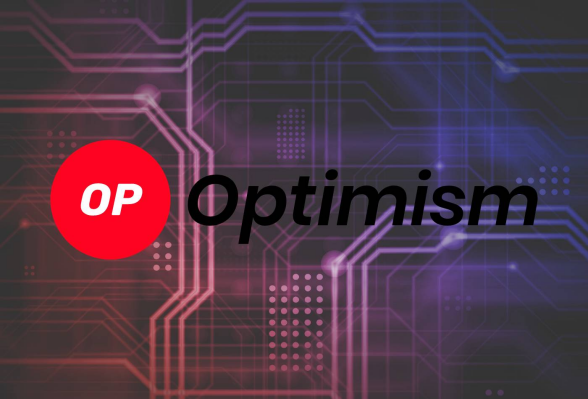
Currently, Ethereum has grown to become the second-largest cryptocurrency by market capitalization, largely due to its support for smart contracts, supporting a growing community of decentralized applications (Dapps) and decentralized finance (DeFi). platform ecosystem. However, Ethereum also faces a big problem: it is slow and expensive to use due to high transaction fees. In order to solve these problems, the Ethereum Brotherhood continues to launch multiple network upgrade plans, one of the important solutions is Optimism (OP).
Optimism background introduction
Optimism is a second-layer expansion solution based on Optimism Rollup technology, designed to handle large-scale transaction processing while maintaining the security of Ethereum. Optimism achieves EVM equivalence, which means that Solidity smart contracts on Ethereum can run on Optimism's Layer 2 without building additional functions. Developers can seamlessly transfer to Optimism to develop applications. Its main feature is to make transactions on Ethereum applications very cheap. By moving transactions from a blockchain to another blockchain, miner fees are greatly reduced and throughput is increased.
According to L2BEAT data, Optimism currently has the second largest TVL (Total Value Locked) in Layer 2, second only to Arbitrum.
three technologies
Optimistic Virtual Machine (OVM)
OVM is a full-featured, EVM-compatible execution environment created specifically for use with Optimism L2, interacting with the Ethereum mainnet via the Web3 API. OVM is very similar to EVM, but is optimized and improved to facilitate modification or removal of context-sensitive opcodes (such as TIMESTAMP or ORIGIN). When the opcode is executed on different chains, the output results are different. However, after optimization in OVM, all transactions can be re-executed on different chains and output the same results. OVM is essentially a sandbox environment that allows L2 transactions to be re-executed and determined on other chains.
Optimism Bedrock
Bedrock is a rollup infrastructure designed and developed by Optimism, which optimizes transaction fees, network performance and the block generation process through modularization and extreme partitioning. Bedrock includes a new L2 derivative pipeline, which is also the only rollup infrastructure that can maximize gas savings in the process of sending transaction data to the Ethereum network. Bedrock is also the only rollup to use the Ethereum Engine API as a separate consensus client or execution client. After the Ethereum expansion plan EIP-4844 (proto-danksharding) is launched, Optimism can be seamlessly integrated with data blobs, significantly reducing gas costs.
OP Stack
OP Stack is an open source software stack created for Optimism Collective to empower its ecosystem. It mainly includes Chain Stack and Governance Stack. The ultimate goal is to become a "Superchain" that can be infinitely combined and expanded. . Currently, there are two blockchains under the OP Stack that have attracted much attention: Optimism and Base. With the prosperity of the Layer2 ecosystem in the future, more OP Chains are likely to appear and be combined into Superchains.
Optimism Token
Optimism launched its own native governance token, OP, on May 31, 2022, which plays a vital role in the direction and operation of the Optimism ecosystem. Here are some key details about OP tokens:
Token Type: OP is an ERC-20 token built on the Ethereum blockchain.
Token usage: OP is used for governance and decision-making within the Optimism network, as well as payment for network services.
Governance system: Optimism is collectively managed by the Optimism Collective, including joint governance by Citizens' House and Token House. OP token holders have the right to participate in the Optimism Collective, a two-tier governance system.
OP trading market
OP tokens can be traded on major mainstream exchanges, as shown in the figure below.
Tokenomics
The initial token supply of OP Coin is 4,294,967,296 OP tokens, with an annual inflation rate of 2%. In year 1, 30% of the initial token supply will be provided to the foundation for distribution, and after the first year, token holders will vote on the foundation’s annual OP distribution budget.
Optimism aims to create an ecosystem that creates value for its three constituencies:
Token holders receive value by effectively redeploying sequencer revenue.
Contributors and builders receive value from retroactive public goods funding.
Users and community members receive value from ongoing airdrops and project incentives.
In short, demand for OP block space generates revenue that is allocated to public goods, thereby driving more demand for block space.
Therefore, OP’s token distribution is as follows:
Ecosystem funds (25%): divided into governance funds (5.4%), partner funds (5.4%), seed funds (5.4%) and unallocated funds (8.8%).
Retroactive public goods funding (20%)
User airdrop (19%): divided into 5% for the first airdrop and unannounced subsequent airdrops.
Core Contributors (19%): People who helped bring Optimism Collective from concept to reality
Investors (17%)
About airdrop
Optimism has airdropped OP tokens multiple times. The first airdrop took place on May 31, 2022, distributing 5% of the total OP token supply. The third airdrop was on September 19, 2023, distributing 19,411,313 OP tokens worth $27 million.
Conclusion: As a second-layer scaling solution for Ethereum, Optimism brings more possibilities to the Ethereum ecosystem through its innovative technology and governance model. As Layer2 technology continues to develop, I believe Optimism will occupy a more important position in the future cryptocurrency market.